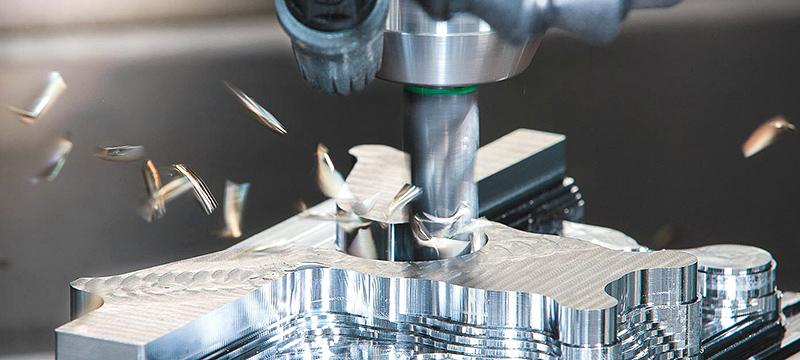

Introduction
In the expansive realm of the Internet of Things (IoT), seamless and efficient communication is paramount. As industries evolve to become smarter and more interconnected, the role of IoT protocols becomes increasingly critical. MQTT (Message Queuing Telemetry Transport) and OPC UA (Open Platform Communications Unified Architecture) are two of the foremost protocols spearheading this advancement in industrial and automation sectors. Their robustness, flexibility, and security features make them indispensable in today’s IoT ecosystem. This article series will explore each protocol in depth, illustrating their importance and functionalities, and why they are considered foundational components of IoT communications.
Understanding MQTT
History and Origin
Developed in 1999 by Andy Stanford-Clark of IBM and Arlen Nipper of Cirrus Link (formerly Arcom), MQTT was originally created to support connections with remote oil pipelines over satellite networks, which required a highly efficient messaging system. The protocol’s design was specifically tailored to conserve bandwidth and ensure reliable message delivery in environments with limited connectivity, making it an ideal choice for various telemetry applications.
Core Concepts and Architecture
MQTT is fundamentally built on a publish/subscribe messaging pattern. This architecture is facilitated by a central broker that manages all message transmissions. Clients, which can be either publishers or subscribers, connect to the broker. Publishers send messages to the broker, tagging them with a topic, and subscribers receive messages by subscribing to these topics.
Broker
The broker is the heart of MQTT’s architecture. It is responsible for receiving all messages, filtering them, determining who is interested, and then publishing those messages to subscribed clients. This decoupling of publishers and subscribers allows the network to efficiently scale to a large number of distributed systems.
Publisher/Subscriber Model
The publisher/subscriber model eliminates the need for direct connections between devices, which enhances scalability and reduces system complexity. This model is particularly effective in IoT scenarios where many devices need to send data to multiple consumers who may have different data requirements.
Topics and Message Structure
- Topics: In MQTT, topics are used to route messages from publishers to subscribers. The topic namespace is hierarchical and resembles a filesystem path structure, which allows for expressive and flexible topic filtration.
- Message Structure: MQTT messages are composed of three parts:
- Fixed header: Contains essential metadata about the message, such as the message type and the QoS level.
- Variable header: Optional and context-specific, includes elements like topic name and packet identifier.
- Payload: The actual data being sent, which can be up to 256 MB in size.
Key Features
- Quality of Service (QoS): MQTT offers three levels of QoS to cater to different delivery guarantees:
- QoS 0 (At most once): Best-effort delivery without confirmation.
- QoS 1 (At least once): Ensures the message arrives at least once.
- QoS 2 (Exactly once): Guarantees message delivery exactly once.
- Last Will and Testament (LWT): This feature is crucial for detecting and responding to client disconnections from the broker. A client can specify a will message that the broker will send to interested parties if it disconnects ungracefully.
Advantages and Use Cases
MQTT’s lightweight packet structure and efficient distribution mechanism make it highly suitable for environments with limited network bandwidth. Its use cases are broad, covering:
- IoT applications where devices periodically send data like temperature or status updates.
- Implementations requiring real-time updates and alerts, such as security systems and vehicle tracking.
Ideal Scenarios for MQTT Usage
- Telemetry: Data collection from field devices such as in agriculture for monitoring soil moisture.
- Home Automation: Controlling lights, locks, and other home systems remotely.
Case Studies Highlighting MQTT Implementation
Industries like manufacturing and healthcare have leveraged MQTT to enhance operational efficiency and patient care. For example, MQTT has been used to monitor manufacturing equipment to predict maintenance needs and in healthcare settings to manage asset tracking of medical equipment.
Demystifying OPC UA
Historical Context and Development
OPC UA was developed by the OPC Foundation as a successor to the original OPC (OLE for Process Control) standards, which were tied to Windows operating system platforms and dependent on Microsoft’s COM/DCOM technologies. Recognizing the need for a platform-independent, more secure, and scalable architecture, the OPC Foundation introduced OPC UA in 2006. This new protocol was designed to support complex data types and offer a secure and reliable communication framework suitable for the demands of industrial automation.
Core Concepts and Architecture
OPC UA is more than just a protocol; it is a comprehensive framework for data exchange and a machine-to-machine communication paradigm in industrial automation. Unlike MQTT, which primarily focuses on data transport, OPC UA also emphasizes data modeling, which is crucial for representing the semantics and metadata of information.
Server/Client Model
- Server: In OPC UA, the server provides data to clients and offers interfaces for clients to interact with it. It handles all aspects of the data management, security, and communications.
- Client: The client consumes the data provided by the server and can also send commands or write data back to the server, depending on the permissions set by the system.
Information Modeling in OPC UA
One of OPC UA’s standout features is its robust information modeling capabilities, which allow it to not only transport data but also describe what the data represents. This is essential in industrial applications where understanding the context of data is as important as the data itself.
- Nodes and References: At its core, OPC UA represents data as nodes, which can be objects, variables, or methods. These nodes are interconnected by references, which can represent hierarchical relationships or data flows.
- Address Space: OPC UA utilizes a structured address space that contains nodes representing all data and services accessible from the server. This approach allows clients to discover data and functionalities dynamically and interact with them in a standardized way.
Key Features
- Platform Independence: Unlike its predecessors, OPC UA is platform-agnostic, capable of running on any system from embedded microcontrollers to cloud-based servers.
- Built-in Security Mechanisms: OPC UA offers comprehensive security features, including encryption, authentication, and user control, making it suitable for critical industrial applications.
- Data Encryption and Authentication: These features ensure that data is not only secure during transmission but also that the entities exchanging information are verified.
Advantages and Use Cases
OPC UA’s sophisticated information modeling and security features make it ideal for complex industrial automation tasks where multiple systems need to interact seamlessly and securely.
- Industry 4.0 and Smart Factories: OPC UA is crucial in the context of Industry 4.0, where it facilitates interoperability among various devices and systems within smart factories.
- Energy Management: OPC UA is used in energy management systems for efficient monitoring and control of electrical systems across grids.
Real-world Examples of OPC UA in Action
Several industrial automation giants have adopted OPC UA to enhance connectivity and automation in their processes. For instance, major automotive manufacturers use OPC UA for device interoperability and to streamline their production lines, enhancing real-time data exchange and system interoperability.
MQTT vs. OPC UA
Below is a detailed comparison of MQTT and OPC UA presented in a tabular format, highlighting their primary characteristics, advantages, and typical use cases to facilitate a clear understanding of when and why each might be preferred in different IoT environments.
Comparative Table: MQTT vs. OPC UA
| Feature | MQTT | OPC UA |
| Primary Design Goal | Lightweight messaging protocol | Comprehensive communication framework including data modeling |
| Architecture | Publish/Subscribe model | Client/Server model with sophisticated data modeling capabilities |
| Complexity | Low complexity, minimal data overhead | High complexity, detailed structure for industrial data |
| Network Suitability | Effective in unstable or low-bandwidth environments | Requires stable network environments |
| Security | Basic security with SSL/TLS encryption | Advanced security features including encryption, authentication, and user control |
| Data Handling | Primarily handles simple data payloads | Handles complex and structured data with semantics |
| Scalability | Highly scalable with a large number of devices | Scalable with more focus on interconnected systems |
| Performance | High efficiency in message delivery under constrained conditions | Optimized for reliable and continuous data exchange |
| Compliance with Standards | Adheres to IoT-focused standards like LwM2M | Complies with industrial automation standards |
| Interoperability | High due to simplicity and widespread use | High in industrial settings due to structured data models |
| Typical Use Cases | IoT applications (e.g., home automation, remote monitoring) | Industrial automation, complex data operations |
| Quality of Service | Supports 3 levels of QoS for message delivery assurance | Provides more robust and configurable communication settings |
| Data Sensitivity and Reliability | Suitable for applications with variable data sensitivity | Ideal for mission-critical applications requiring precise control |
| Security Features | Basic encryption and optional external security mechanisms | Built-in comprehensive security protocols |
| Industry Adoption | Broadly adopted in consumer IoT and simple telemetry applications | Predominantly used in manufacturing, energy, and process industries |
This table summarizes the distinct aspects and capabilities of MQTT and OPC UA, helping to clarify the scenarios in which each protocol excels. MQTT is generally better suited for less complex, high-volume, and resource-constrained environments. In contrast, OPC UA is tailored for industrial applications where detailed data modeling, robust security, and reliable communications are paramount.
When selecting a protocol, consider the specific demands of your application, including data complexity, required security level, network stability, and scalability needs. This comparison should serve as a guide to making an informed decision that aligns with the technical requirements and goals of your IoT or IIoT deployment.
The post Exploring MQTT & OPC UA: The Backbone of IoT Communication appeared first on IoT Business News.








